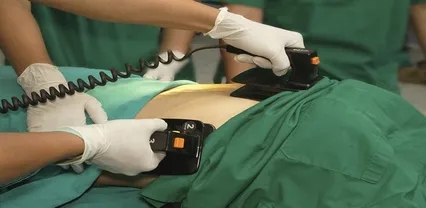Cardiac defibrillation is the process of administering a transthoracic electrical current to an individual who experiences one of the two lethal ventricular dysrhythmias, ventricular fibrillation (VF) or pulseless ventricular tachycardia (VT).

Complications of defibrillation
The stored energy is immediately released when a patient is defibrillated. The shock is administered at whatever point the cardiac cycle happens to be in at that moment. If an electrical shock is given to someone who is not in VF or pulseless VT, it is possible for the energy to be delivered during the relative refractory period, which corresponds to the latter part of the T wave of the cardiac cycle. If an electrical charge were given at this crucial time, it might cause VF by the “R-on-T phenomenon”, leading to cardiac arrest in a patient who originally had a pulse. For this reason, defibrillation is only performed for VF or pulseless VT. Synchronised cardioversion is performed rather than defibrillation to avoid this complication when a patient is not in cardiac arrest but needs electrical cardioversion for an unstable tachycardic rhythm. Synchronised cardioversion with a 100 Joules of energy dose is recommended for a patient with VT and a palpable pulse who also shows signs of hypoperfusion and haemodynamic instability.